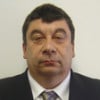- HubPages»
- Education and Science»
- History & Archaeology»
- History of the Modern Era»
- Twentieth Century History
British Air Forces Developments to 1914 (Great War, World War 1)
Balloons in American Civil War
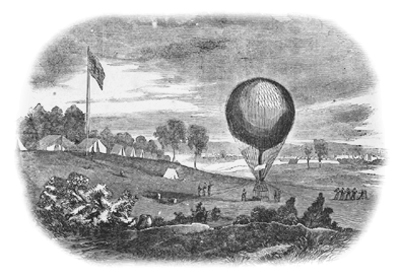
Royal Engineers Balloon Section
1862 - The War Office was made aware of the potential use of balloons for observation by officers of the Royal Engineers who had observed them being utilised in the American Civil War.
1878 -
- The War Office directs experienced balloonist Captain James Templar to set up a unit of the Royal Engineers to experiment with ballooning - this became the 'School of Ballooning', based at Royal Arsenal, Woolwich.
- Military flying in Great Britain began with the construction and flying of a hydrogen-filled balloon.
1879 - The Balloon Unit had 5 balloons.
1880 -
- Military balloon training and demonstration took place at Aldershot.
- A balloon section of the Royal Engineers took part in the Aldershot manoeuvres and during the next twenty years balloons accompanied several expeditions to the outposts of Empire.
1881 -
- December 10th - Walter Powell lost at sea with balloon ('Saladin') borrowed from the War Office. Captain Templar and Mr. Agg-Gardner were also involved at Somerset and Dorset.
1882 -
- School moved to the 'School of Military Engineering' at Chatham, Kent.
- Superior balloon skin discovered (Goldbeater's Skin).
- Templar takes out patent for unmanned 'balloon photography'.
1888 - 'School of Ballooning' (aka 'Balloon Factory') was set up at Chatham, Kent.
1890 -
- The 'Balloon Section' was formally established as a unit of the Royal Engineers.
- The 'School of Ballooning' moved to Stanhope Lines, Aldershot to compliment the Royal Engineers Balloon Section.
1894 - A factory was set up at South Farnborough.
1897 - Balloon Section of Royal Engineers was renamed the 'Balloon Factory'
1898 - The factory grew steadily in size becoming 'HM Balloon Factory'.
1899 - Factory increased production in order to supply balloons for the Boer War.
1899 to 1901 - Four balloon sections operated with some success in South Africa during the Boer war.
1902 - Army experiments with dirigible airships began.
1904 to 1906 - Factory moved to edge of Farnborough Common and an airship shed was built.
1905 - John William Dunne is assigned to the 'Army Balloon Factory'.
1906 -
- Colonel John Capper took command of the 'School of Ballooning'.
Samuel Franklin Cody appointed 'Chief Inspector of Kiting'.
1907 -
- Cody is part of the team making 'British Army Dirigible No: 1' at Aldershot.
- October 5th - 'British Army Dirigible No 1', christened 'Nulli Secundus', made a successful sustained flight from Aldershot to London in 3 hours 25 minutes.
1909 -
- Part of the Factory separated to form the 'Air Battalion of the Royal Engineers'.
- The 'Balloon School' was taken over by Major Sir Alexander Bannerman.
1910
- October - the 'Balloon Section' of the Royal Engineers was allotted funds to 'afford opportunities for aero-planing'.
1911 - The factory at South Farnborough became the 'Army Aircraft Factory'.
1912 - The factory became the 'Royal Aircraft Factory'.
British Army Dirigible No 1
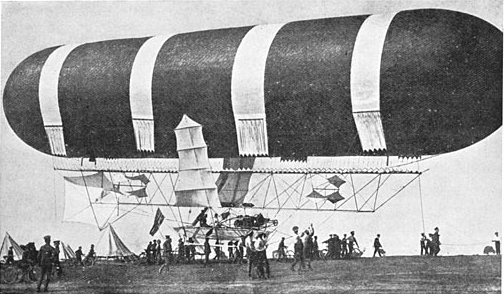
Cody Manlifter Kite
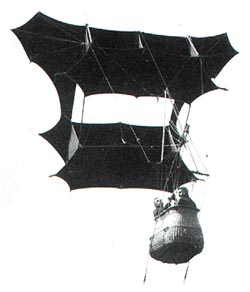
Cody War-Kites
Kites in the Air Force
1901 - Samuel Franklin Cody (born Cowdery) patented his famous kite design - a winged variation of a double-cell box kite by Lawrence Hargrave.
1901
- December - Cody offered this version for spotting to the War Office for use in the 2nd Boer War.
1903 -
- Cody kites are exhibited at Alexandra Palace.
- Cody is hired by the Admiralty to explore the possibilities of using kites for military observation posts.
1906 -
- The British Army hire Cody as 'Chief Instructor in Kiting' at the 'Balloon School', Aldershot.
- Cody formed two kite sections of the Royal Engineers, later to become the 'Air Battalion of the Royal Engineers, No: 1 Company.'
- Cody wanted to develop a motorized kite into a man-carrying airplane.
British Army Aeroplane No: 1
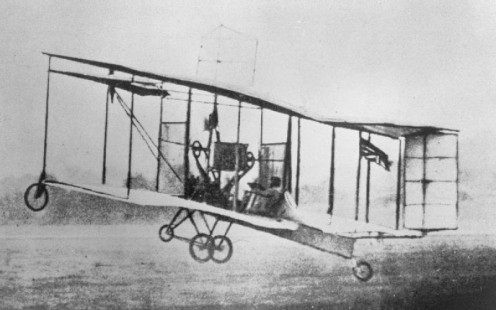
Heavier-than-air Experiments
1905 -
- Cody built and flies a glider.
-
Dunne built a passenger-carrying glider, the 'D. 1'.
Between 1906 and 1909 - a trickle of funds sponsored the heavier-than-air experiments of Cody and John William Dunne in their efforts to produce practical powered aircraft. Cody produced the Cody War-Kites, a smaller alternative to reconnaissance balloons.
1907 -
- July - Dunne's 'D. 1' glider is shipped to Scotland for testing.
- 'British Army Aeroplane No: 1' begins development.
!907 into 1908 -
- The 'British Army Council' funded the development of the 'D. 1-B' powered airplane.
-
The Dunne-Huntington powered triplane was designed.
1908
- The 'D.3' man-carrying glider was flown successfully.
-
The 'D.4' powered airplane did fly but with less success.
- September 2nd - Cody flew from the deck of HMS 'Revenge'.
1908 October 16th - Cody's enormous 'British Army Aeroplane No 1' droned 1,390 feet across Laffan's Plain at Farnborough: the first powered flight in Britain.
1909 -
- The War Office cut off funds after a grand total of £2,500 had been spent.
- Dunne forms the 'Blair Atholl Aeroplane Syndicate'.
- April - Cody's contract with the Army ends.
- Cody is given the aeroplane and continues his work at Farnborough.
- May 14th - Cody establishes distance and endurance records on a test flight of over a mile.
- August - all modifications to the aircraft are complete.
- August 14th - the first passengers are carried in the aircraft.
- December 29th - flight from Aintree Racecourse is cut short due to fog.
1910 -
- The 'Dunne D. 5', a tailless V-shaped biplane, is completed.
- December 20th - the stability of the 'D. 5' is demonstrated at the Isle of Sheppey, Kent..
- December 31st - Cody won the Michelin Cup.
1911 - Cody's third airplane completed the Daily Mail 'Circuit of Great Britain Race.'
1912 - The 'Cody V' won the 'British Military Aeroplane Competition.'
1913 August 13th - Cody is killed on a test flight of the 'Cody Floatplane'.
Bristol Boxkite
Royal Engineer Air Battalion
1911 February 28th - The Army Order came which brought into existence the Royal Engineer Air Battalion with:
- No: 1 (Airship) Company commanded by Captain E M Maitland
- No: 2 (Aeroplane) Company, at Larkhill on Salisbury Plain, commanded by Captain J D B Fulton.
Volunteers had to learn to fly at their own expense - if they were successful the government would repay them £75.
One of the first pilots, Lieutenant B A Cammell, even brought his own Blériot XI to join the
- six Bristol Boxkites,
- a Henri Firman and
- an old reconstructed Howard Wright biplane
that formed the equipment of Britain's first air force.
'Henri Farman' Airplane
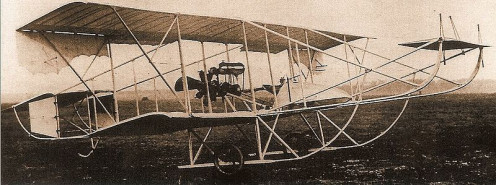
Britain's 'Flying Corps'
1911
- December 18th - the 'Committee of Imperial Defence' established an eight man technical sub-committee to examine the prospects of establishing an efficient aerial service.
1912 end of February - Their recommendations were published. They were:
- the formation of a 'Flying Corps' with separate Military and Navy Wings,
- a reserve of trained pilots,
- retention of the 'Royal Aircraft Factory' and
- the setting up of a Central Flying School with
- an Air Committee to hold the ring between War Office and Admiralty.
The opening words of the committee report read:
'The British Aeronautical Service should be regarded as one and should be designated “The Flying Corps”.'
From the start, however, this admirable unity proved as fragile as a contemporary aeroplane.
Royal Flying Corps 1912 - 1918
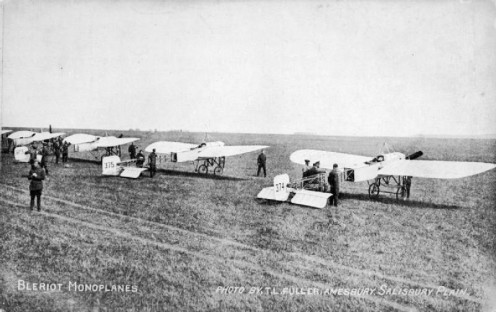
Royal Flying Corps
1912 April 13th - The 'Royal Flying Corps' was constituted by a Royal Warrant with a 'Military Wing' and a 'Naval Wing'.
A month later - it absorbed the old 'Air Battalion' and its reserve with £308.000 voted by Parliament for its establishment.
The problems of the fledgeling air force were already considerable but a major new stumbling block lay in old and irreconcilable jealousies between the War Office and Admiralty.
Winston Churchill - Naval Wing - RFC

Royal Navy Heavier-than-air Flying
The Royal Navy already had some years of experience in the air.
1908 - Captain Murray Sueter, a torpedo expert, was appointed to be the first Inspector of Airships on the Admiralty Staff.
1909 - £35,000 was allocated for the construction of a naval airship but its début was disastrous. The Vickers-built rigid, named ominously 'Mayfly', broke its back before even taking off for its first flight. One old Admiral took one look and called it 'the work of a lunatic'.
The beginning of heavier-than-air flying in the Royal Navy was somewhat more successful.
1911 February - Francis McClean offered the Admiralty two Short biplanes for volunteer officers to learn to fly at his flying school in Eastchurch in Kent. Four officers graduated in six winter weeks and by the beginning of the year Eastchurch had become the Admiralty's own de facto flying school.
Royal Flying Corps Military Wing Recruitment Poster 1913
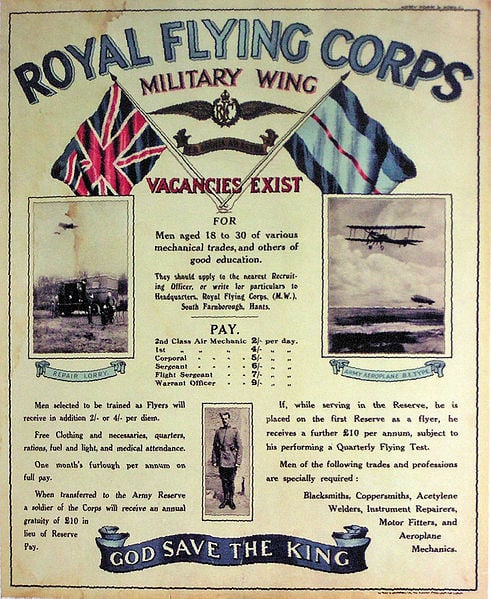
Royal Flying Corps 'Naval Wing'
1912 April 13th - The 'Naval Wing, Royal Flying Corps' came into existence.
1912 July 11th - It was formally recognized by Admiralty Circular letter 22.
From the outset the regulations tended to be treated by the Navy with a Nelsonian blind eye.
Eastchurch under the command of C R Samson was an Admiralty private preserve and Sueter, now Director of the Admiralty Air Department, jealously guarded naval interests with the encouragement of the First Lord of the Admiralty Winston Churchill.
The Navy also set the pace in using aircraft for fighting, experimenting with:
- machine-guns,
- bomb and
- torpedo dropping
while the Army stuck rigidly to reconnaissance.
The Admiralty also tended to patronize British independent manufacturers such as Shorts and Sopwith.
They also bought aircraft from France and even Germany for comparison while the War Office favoured the docile products of the 'Royal Aircraft Factory'.
Winston Churchill with Naval Wing RFC, 1913
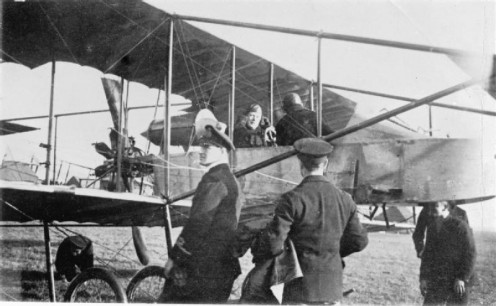
Central Flying School at Upavon
The only real common ground was the 'Central Flying School' at Upavon in Wiltshire
- commanded by a naval officer, Captain G M Paine,
- assisted by a Major of the Royal Scots Fusiliers named Hugh Maontague Trenchard,
and here the pilot training for each Wing was the same, with each expected to act as a reserve for the other in the event of war.
Central Flying School Staff 1913
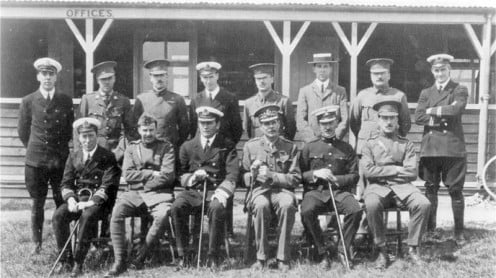
British National Air Force Splits
1914 July 1st - The uneasy marriage between the Army and Navy Wings was sundered.
- The Military Wing of the RFC kept the title 'Royal Flying Corps' and
- The Navy Wing formally adopted the name that had been in official use since the beginning - 'Royal Naval Air Service'.
As the official historian said …
'the national air force was broken in two. The Army and the Navy had been willing enough to co-operate but the habits of life and thought of a soldier and a sailor are incurably different.'
Nowhere were these differences so marked and passions more easily roused than in the question of Air Force uniforms.
External Link: Air Force Uniforms 1700 to 1937 (Amazon)
Royal Naval Air Service (No: 1 Squadron) 1914
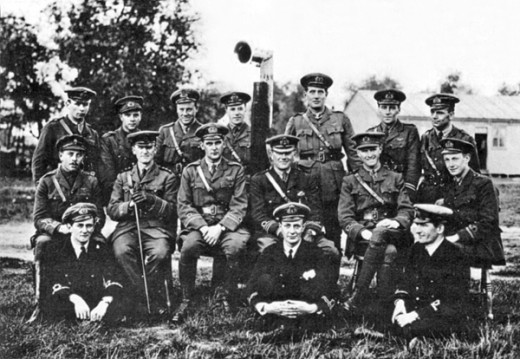
Great War Preparations
1914 June - The entire 'Military Wing' of Britain's Royal Flying Corps (RFC) gathered at Netheravon on Salisbury Plain to assess the efficiency of its:
- seven hundred officers and men,
- thirty-one aircraft and
- six squadrons.
The star was the latest 'Blériot Experimental 2' from the 'Royal Aircraft Factory', the BE2c with:
- a 70-hp engine,
- new wings introducing ailerons and dihedral, and
- modified tail surfaces,
The first example was flown in from Farnborough by Major Sefton Brancker. He had climbed to 2,000 feet and, without touching the controls again until his landing approach, wrote a reconnaissance report along the way, so great was the machine's inherent stability.
The primary military function of aircraft was then reconnaissance, requiring stability, and manoeuvrability.
1914 June 28th - The Austro-Hungarian Empire's Crown Prince was assassinated in Sarajevo, Serbia by Bosnian nationalists.
1914 July 2nd - The Netheravon camp broke up and the pilots returned to their squadrons.
1914 end of July - The sixth instruction course at the 'Central Flying School', Upavon was approaching written examinations; the pupils had over twenty-four flying hours each and were anticipating the award of the Military Wing's pilot's badge, the Royal Flying Corps crest held in the outstretched wings of a swift.
1914 July 28th - Austria-Hungary declared war on Serbia: the allies of both took up arms.
1914 August 3rd - German troops crossed into Belgium.
- All the pupil pilots at Upavon were summoned to the lecture room and told by the Commandant, Captain G M Paine RN, that all men considered sufficiently advanced would be posted immediately to active service squadrons.
1914 August 4th - Britain was at war.
- In France, Germany, Austria and Russia pilots were flying off on reconnaissance missions as the great armies manoeuvred and clashed below them: the first war of the air had begun.
The value of the aircraft as a weapon of war was still hardly appreciated; but within little over a year it would introduce a revolutionary aspect to machine warfare - the struggle for air superiority.
